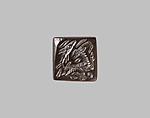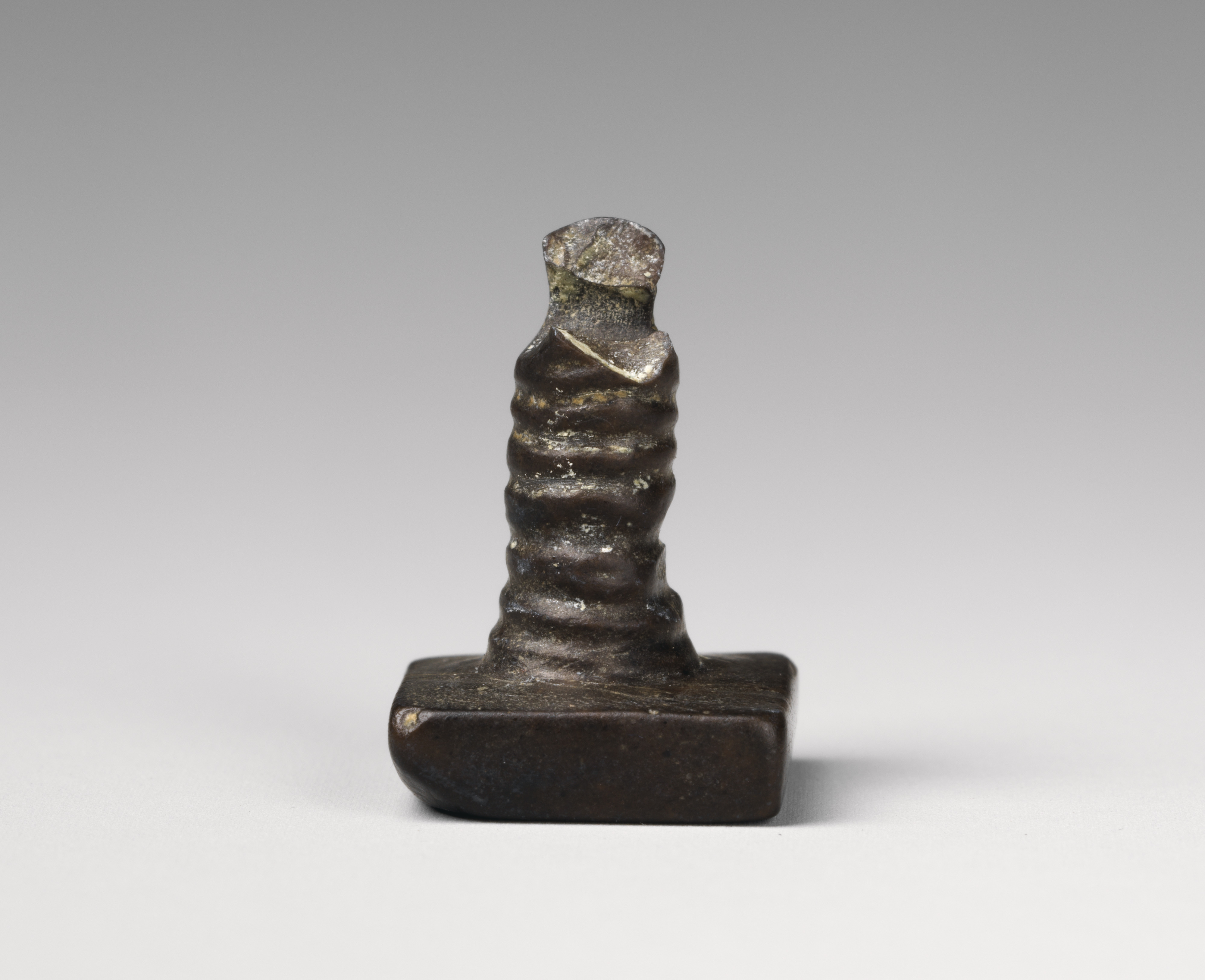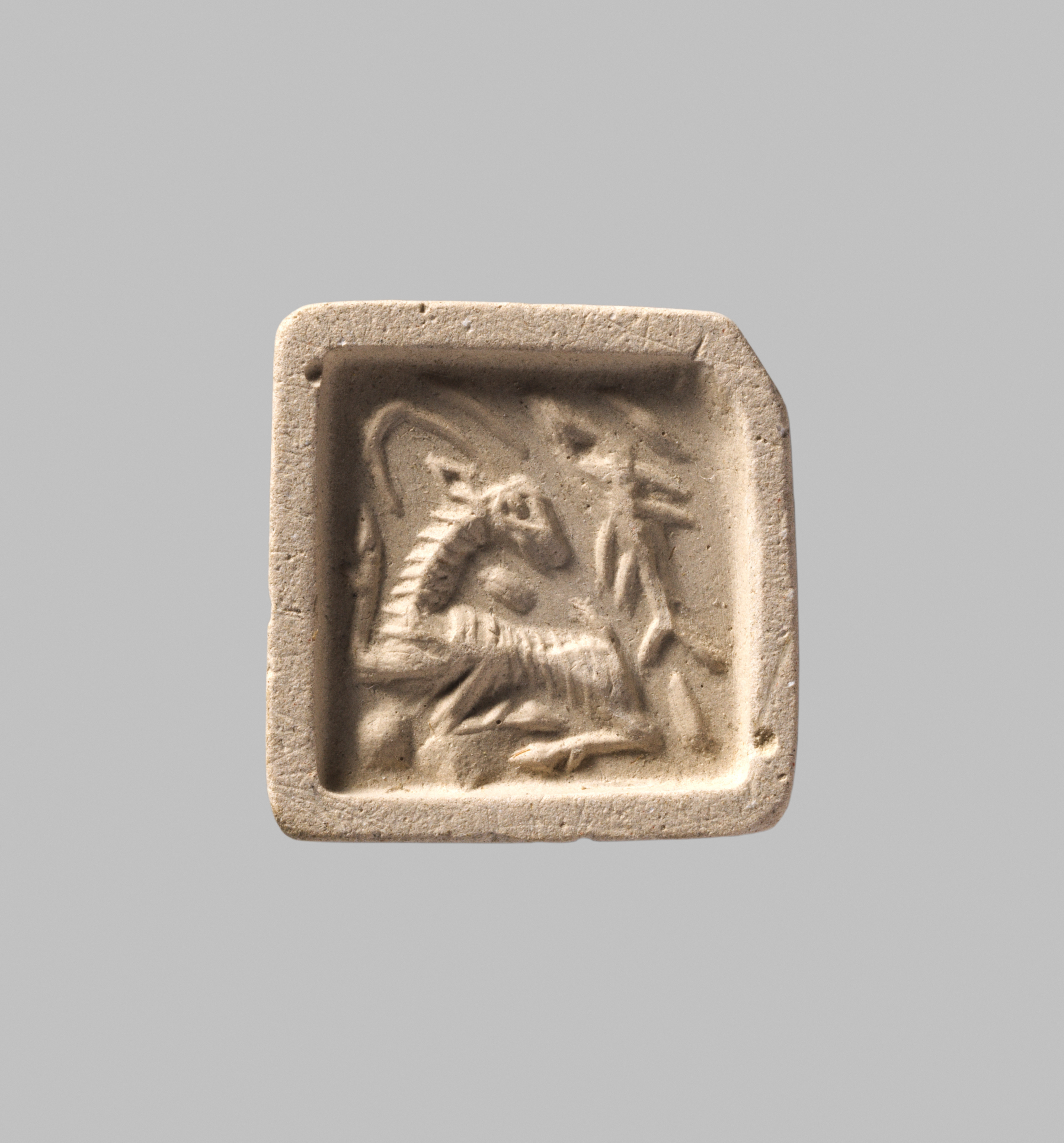Square plaque seal with stalk handle
Not on view
Stamp seals first appeared in northern Mesopotamia during the 6th millennium and were exclusively used throughout the ancient Near East until the innovation of the cylinder seal in the second half of the 4th millennium BC. Cylinder seals were the preferred administrative tool in Mesopotamia during the 3rd and 2nd millennia B.C. and in the 1st millennium B.C., stamp seals were once again adopted by the administrative classes. In Anatolia, stamp seals predominated and it was only during the Old Assyrian Period (ca. 2000-1700 BCE) that Anatolians used cylinder seals in their administrative practices. Like cylinder seals, stamp seals could be made from a variety of local and exotic stones as well as metal and even clay. They were impressed directly upon tablets, vessels, and other clay objects, and used on clay bullae that were used to seal storage containers and doors. Stamp seals exhibit either perforated backs or handles, sometimes with perforation, for ease in wearing and handling the objects. The shapes of the seals themselves as well as the motifs carved into their faces demonstrate a wide range of diachronic and regional glyptic innovation. Stamps seals could be simple in shape, but there are numerous examples of more complex shapes and some stamp seals were rendered as animals or human figures. The images carved into the seal face itself ranged from simple geometric patterns to elaborate scenes of human and divine images. Protective properties may have been ascribed to both the material itself and the carved designs. Seals are important to the study of ancient Near Eastern art because many examples survive from every period and can, therefore, help to define chronological phases. Often preserving imagery no longer extant in any other medium, they serve as a visual chronicle of style and iconography.
The modern impression of the seal is shown so that the entire design can be seen. This square seal, carved from black hematite, has a horizontally ribbed handle topped by a perforated loop. The carved image is of a seated goat with one foreleg raised and its head turned backward toward a fish. The striated pattern of the goat’s body is common in other depictions of animals, as is the ribbed treatment of the handle. Like most of the stamp seals discovered at Kültepe, it was probably used during the latter part of the Old Assyrian period in Anatolia (1830-1700 B.C.)
This image cannot be enlarged, viewed at full screen, or downloaded.
This artwork is meant to be viewed from right to left. Scroll left to view more.




